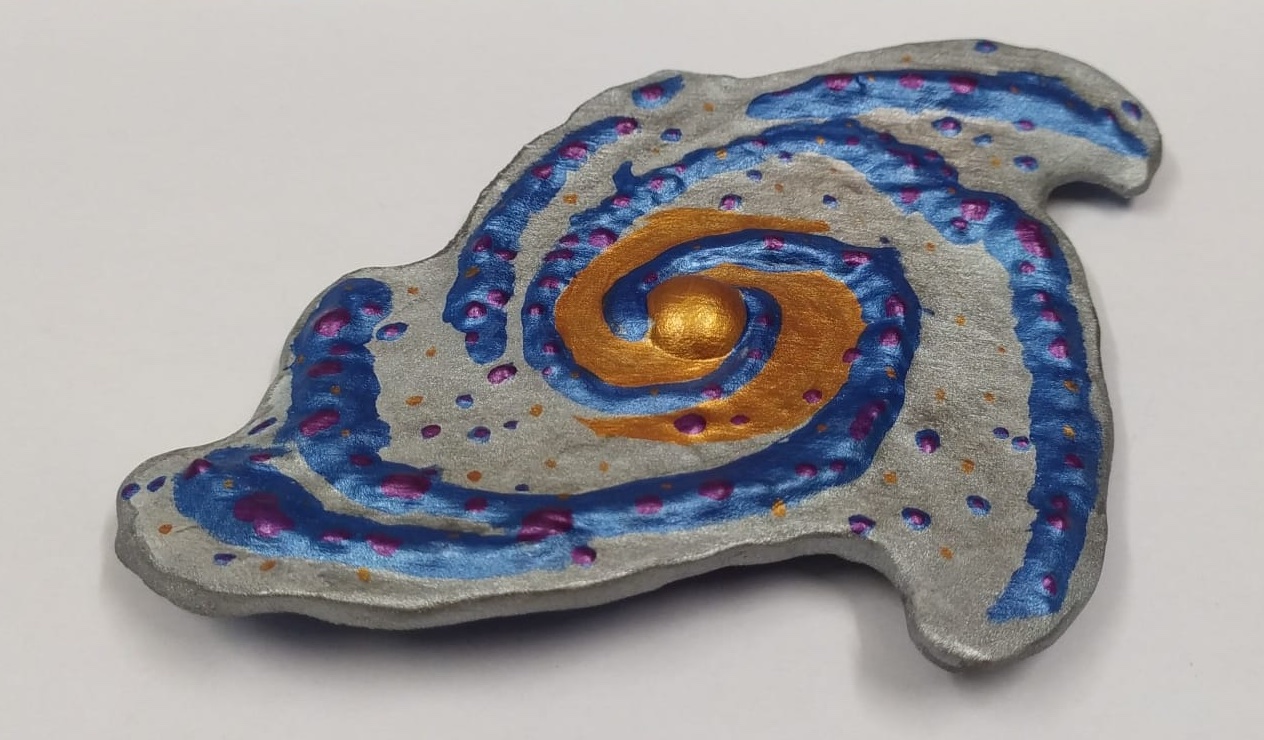About this galaxy
NGC 2997 is a spiral galaxy, with a slightly warped disc, like the disc of the Milky Way. The presence of globular superclusters of stars in the centre is a feature that distinguishes this galaxy from our own. It is 30 million light-years away from us and is seen in the southern constellation of Antlia (the Pneumatic Machine).
The 3D model
In the model you can see the warped shape of the disc, and the spiral arms with bright knots of star formation exaggerated in size so that they can be felt. The centre of the galaxy is represented by a sphere, because in the images here we see a glowing uniform luminous ball. We have left the sphere open at the back of the galaxy, so that we can perceive the small bulges that represent the globular superclusters that inhabit this region and that we can only see by changing the contrast of the image. The small depression in the centre is placed to indicate the possible existence of a supermassive black hole, with the mass of millions of suns.
For the creation of the model we used an image obtained from observational data with U, V, R, I and H alpha filters, which allow us to detect star formation processes.
This work has been carried out with a grant from the R&D&I ‘Proof of Concept’ 2022 (PDC2022) call for projects, financed by the European Union through the NextGenerationEU Recovery, Transformation and Resilience Plan. Project’s reference: PDC2022-133930-I00.

